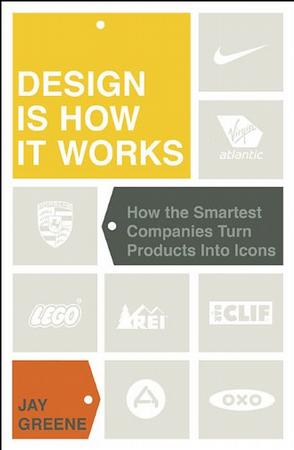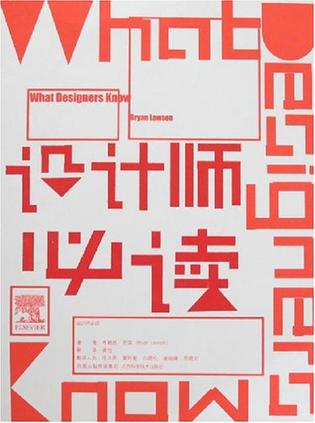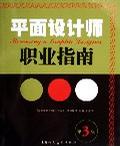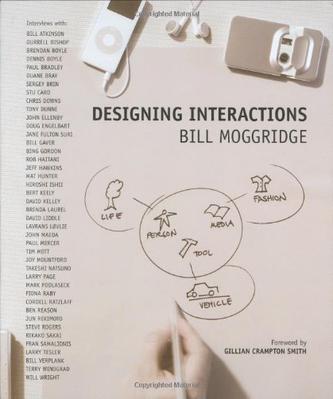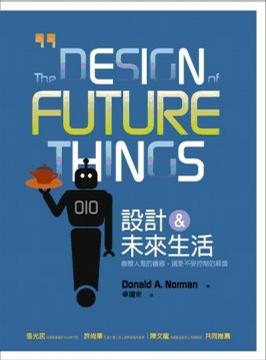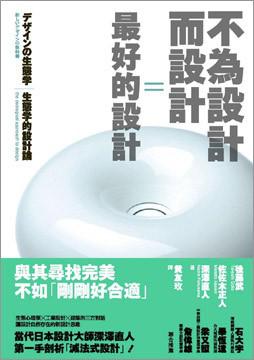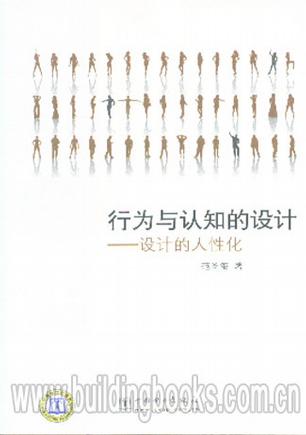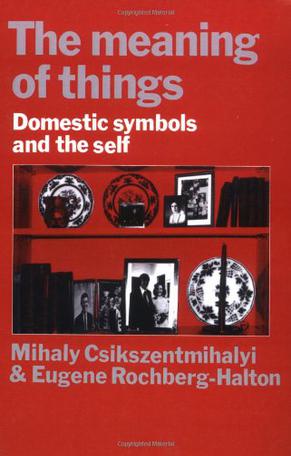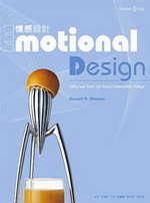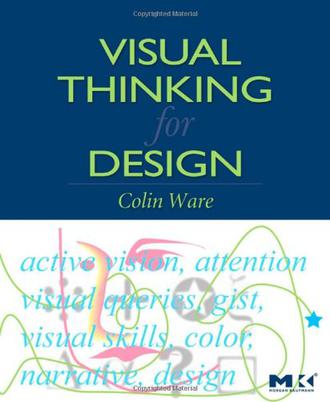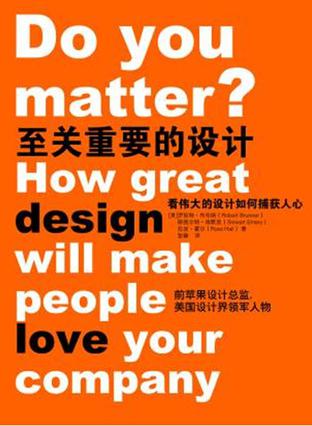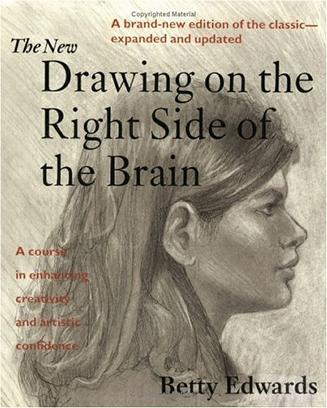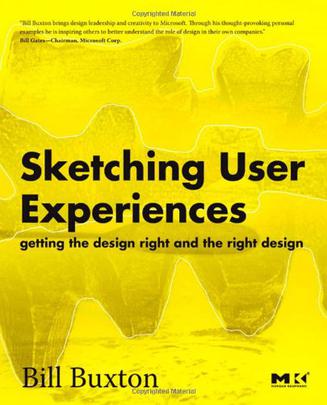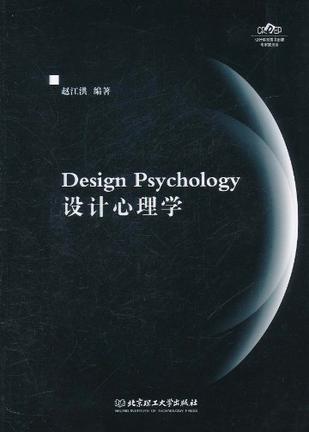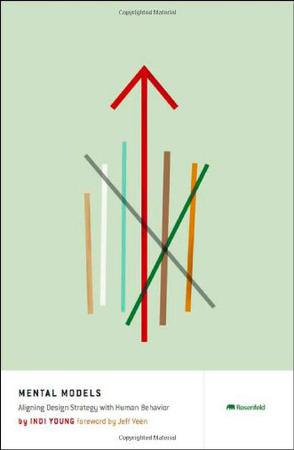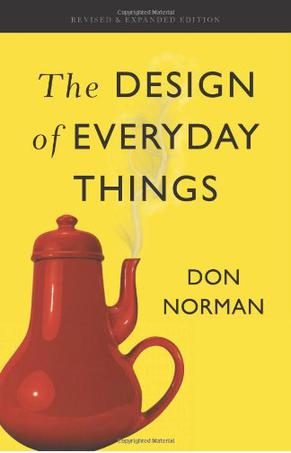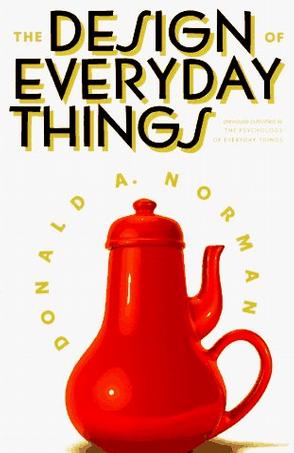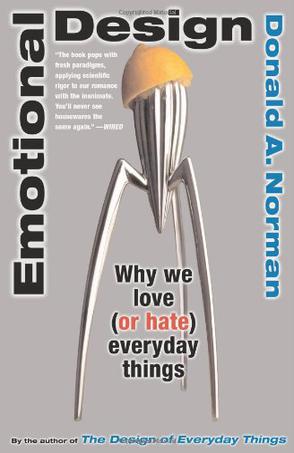欢迎来到相识电子书!
标签:Design
-
Design Is How It Works
"It's not just what it looks like and feels like. Design is how it works."-Steve Jobs There's a new race in business to embrace "design thinking." Yet most executives have no clue what to make of the recent buzz about design. It's rarely the subject of business retreats. It's not easily measurable. To many, design is simply a crapshoot. Drawing on interviews with top executives such as Virgin's Richard Branson and Nike's Mark Parker, Jay Greene illuminates the methods of companies that rely on design to stand out in their industries. From the experiences of those at companies from Porsche to REI to Lego, we learn that design isn't merely about style and form. The heart of design is rethinking the way products and services work for customers in real life. Greene explains how: -Porsche pit its designers against each other to create its bestselling Cayenne SUV -Clif listened intently to customers, resulting in the industry-changing Luna energy bar -OXO paid meticulous attention to the details, turned its LiquiSeal mug from an abysmal failure into one of its greatest successes -LEGO started saying no to its designers-saving its brick business in the process Greene shows how important it is to build a culture in which design is more than an after-the-fact concern-it's part of your company's DNA. Design matters at every stage of the process. It isn't easy, and it increases costs, but it also boosts profits, sometimes to a massive extent. In an increasingly competitive marketplace, design represents the best chance you have of transcending your competitors. -
设计师必读
本书开始部分与它的姊妹书在某些内容上会有所重复,因为确定设计的本质时,我们需要探索为什么设计知识是哪此的特殊,并且论证其研究的方法。设计知识本身是不可见的,我们需从它的表现形式来探索,这就包括设计师根据他们掌握的知识画出来的图纸,以及运用较新的计算机辅助设计所涉及的一些复杂问题。 什么是设计师工作时运用的知识以及如何利用这些知识?本书的每一章解决一个独特的技术问题:提供一个深入设计知识源泉的研究技术,阐述设计师如何在手绘与计算机间的互动中发展他们的知识,提出了关于最近的设计知识本质的争议。本书聚焦于设计师如何利用绘图交流想法,以及当设计在发展中如何“交流”,本书也阐述了有经验的设计师与新手之间知识运用的不同,从而提出设计专业技能是可以提高的。总之,本书建立了关于各种技术、知识和对设计的理解的布局框架。本书适用于本科生和研究生学习使用。 -
平面设计师职业指南
如果你真想成为一位平面设计师,那就问问你自己这个问题:你知道人们对平面设计师的期待是什么吗?你知道怎样来满足这些期待吗?本书是平面设计界最新的职业指南,从主要的设计领域到小的设计分支,对今天的平面设计进行了清晰而又扼要的扫描。书中那些设计界领军人物访谈中的见解,谈及互动设计、信息设计、动态设计、设计教育和训练、求职作品的准备、怎样求职等等。本书适合平面设计专业人员参考学习。 -
Designing Interactions
Digital technology has changed the way we interact with everything from the games we play to the tools we use at work. Designers of digital technology products no longer regard their job as designing a physical object--beautiful or utilitarian--but as designing our interactions with it. In Designing Interactions, award-winning designer Bill Moggridge introduces us to forty influential designers who have shaped our interaction with technology. Moggridge, designer of the first laptop computer (the GRiD Compass, 1981) and a founder of the design firm IDEO, tells us these stories from an industry insider's viewpoint, tracing the evolution of ideas from inspiration to outcome. The innovators he interviews--including Will Wright, creator of The Sims, Larry Page and Sergey Brin, the founders of Google, and Doug Engelbart, Bill Atkinson, and others involved in the invention and development of the mouse and the desktop--have been instrumental in making a difference in the design of interactions. Their stories chart the history of entrepreneurial design development for technology. Moggridge and his interviewees discuss such questions as why a personal computer has a window in a desktop, what made Palm's handheld organizers so successful, what turns a game into a hobby, why Google is the search engine of choice, and why 30 million people in Japan choose the i-mode service for their cell phones. And Moggridge tells the story of his own design process and explains the focus on people and prototypes that has been successful at IDEO--how the needs and desires of people can inspire innovative designs and how prototyping methods are evolving for the design of digital technology. Designing Interactions is illustrated with more than 700 images, with color throughout. Accompanying the book is a DVD that contains segments from all the interviews intercut with examples of the interactions under discussion. Interviews with: Bill Atkinson, Durrell Bishop, Brendan Boyle, Dennis Boyle, Paul Bradley, Duane Bray, Sergey Brin, Stu Card, Gillian Crampton Smith, Chris Downs, Tony Dunne, John Ellenby, Doug Englebart, Jane Fulton Suri, Bill Gaver, Bing Gordon, Rob Haitani, Jeff Hawkins, Matt Hunter, Hiroshi Ishii, Bert Keely, David Kelley, Rikako Kojima, Brenda Laurel, David Liddle, Lavrans Løvlie, John Maeda, Paul Mercer, Tim Mott, Joy Mountford, Takeshi Natsuno, Larry Page, Mark Podlaseck, Fiona Raby, Cordell Ratzlaff, Ben Reason, Jun Rekimoto, Steve Rogers, Fran Samalionis, Larry Tesler, Bill Verplank, Terry Winograd, and Will Wright -
不為設計而設計=最好的設計
與其尋找完美,不如「剛剛好合適」 當代日本設計大師深澤直人第一手剖析「減法式設計」 生態心理學╳工業設計╳ 建築的三方對話 讓設計自然存在的新設計思維! 無印良品的車站手錶、深澤直人的壁掛式CD Player、Jasper Morrison的GLO-BALL燈、Alvar Alto的麥雷亞宅邸、科比意的拉托雷修道院……,這些設計/建築個案完美地調和了人、物品與環境的關係,不僅令人印象深刻,也提示了我們有別於傳統的設計思維: 從環境出發(vs以人為中心) 掌握設計者與使用者共感的元素(vs基於設計者與使用者的主觀意識) 在「不加思索」的行為中醞釀客觀的物品(vs設計者的個性與主觀意念) 使用者自行發現設計隱含的價值(vs設計者賦予的使用行為) LATER WOW(vs FIRST WOW) 日本知名的設計師深澤直人、建築師後藤武、生態心理學者佐佐木正人,在本書共聚一堂,分享在「affordance」的觀點下捕捉到的「設計」本質。除了設計原理,本書也兼及設計的實踐和創作,並援引美術/建築/設計的代表作品,讓讀者明瞭如何構思、判斷與進行設計工作的步驟。書末特別收錄延伸閱讀書目、經典名句、關鍵詞年表與關係圖。 -
行为与认知的设计 设计的人性化
《行为与认知的设计·设计的人性化》主要内容包括:关于人性化产品设计、操作性与人类的输出系统、认知性与人类的输入系统、感性与人类的内心世界、设计与行为、产品使用者的多样性、作为环境中的人的人性化。设计的人性化涉及到很多方面的研究。 -
The Meaning of Things
The meaning of things is a study of the significance of material possessions in contemporary urban life, and of the ways people carve meaning out of their domestic environment. Drawing on a survey of eighty families in Chicago who were interviewed on the subject of their feelings about common household objects, Mihaly Csikszentmihalyi and Eugene Rochberg-Halton provide a unique perspective on materialism, American culture, and the self. They begin by reviewing what social scientists and philosophers have said about the transactions between people and things. In the model of 'personhood' that the authors develop, goal-directed action and the cultivation of meaning through signs assume central importance. They then relate theoretical issues to the results of their survey. An important finding is the distinction between objects valued for action and those valued for contemplation. The authors compare families who have warm emotional attachments to their homes with those in which a common set of positive meanings is lacking, and interpret the different patterns of involvement. They then trace the cultivation of meaning in case studies of four families. Finally, the authors address what they describe as the current crisis of environmental and material exploitation, and suggest that human capacities for the creation and redirection of meaning offer the only hope for survival. A wide range of scholars - urban and family sociologists, clinical, developmental and environmental psychologists, cultural anthropologists and philosophers, and many general readers - will find this book stimulating and compelling. -
思维与设计
《思维与设计》内容简介:作为中国设计基础教育的思维训练课程,应当超越专业的局限,着力研究广泛性、普适性的现代设计的思维方式,也更加需要汲取艺术富于想象力的创造精神。艺术的本质应当是创造与个性的发挥,而不是模仿与再现。设计则是在规定性中发现问题,解决问题。艺术思维与设计思维形成完美的结合,中国现代设计的美好前景就为期小远。 -
情感設計
你可曾疑惑為何便宜的葡萄酒倒在別緻的玻璃酒杯中,品嘗起來就特別美味?或是為什麼洗過的車或打過蠟的車感覺特別好開?新的研究顯示,有吸引力的東西的確會比較好用。 在過去十年間,設計傾向讓產品容易使用,其中有一大原因歸於 Norman 開創性的言論《設計心理學》(The Design of Everyday Things)。但當他在《情感設計》(Emotional Design) 這本迷人的新書中詳細的論證之後,我們不只是在用產品而已,我們的情感已經深深地介入這個活動了。這本書首次論證了這個看起來似乎很簡單的概念所帶來的深遠影響。 每次當我們接觸到一個東西,決定我們反應的不單是它有多好用,還包括它有多好看、有沒有忠實地反映我們的形象,或甚至喚起我們的懷舊之情。當一個產品在美學上令人愉悅且符合自己或社會的價值觀,我們就會以正面之情看待它,這就是為什麼即使便宜的電子錶也可以精確地讀出時間,仍有人願意花大把鈔票去買一隻昂貴的手工錶。 然而消費者如何體驗產品還只是本書其中的一環;情感在設計師的工作中也扮演了極重要的角色。愉快的心情會增加創意;焦慮的狀態會提昇注意力。不管是設計機器人或辦公空間、果汁機或捷豹汔車,設計師總在正面與負面的感覺中來回波動,而且他們的作品證明了這些情緒的影響。此外,這個觀點更進一步拓展了未來的設計:如果我們製造出來的東西可以感知我們的情緒狀態會如何呢?又要如何加強我們與它們之間的互動呢? Donald Norman 陳述了這些以及更多其他鼓動人心的議題--利用豐富的案例和科學上最新的見解,大膽的探索我們日常生活中會帶來情緒影響的物品。他的暢銷書《設計心理學》顯示了為什麼我們使用的產品不應該讓人困惑、惱怒,還有沮喪,《情感設計》則解釋了為什麼它們也必須迷人、愉悅,以及充滿樂趣。 -
Visual Thinking
Increasingly, designers need to present information in ways that aid their audiences thinking process. Fortunately, results from the relatively new science of human visual perception provide valuable guidance. In Visual Thinking for Design, Colin Ware takes what we now know about perception, cognition, and attention and transforms it into concrete advice that designers can directly apply. He demonstrates how designs can be considered as tools for cognition - extensions of the viewers brain in much the same way that a hammer is an extension of the users hand. Experienced professional designers and students alike will learn how to maximize the power of the information tools they design for the people who use them. Presents visual thinking as a complex process that can be supported in every stage using specific design techniques. Provides practical, task-oriented information for designers and software developers charged with design responsibilities. Includes hundreds of examples, many in the form of integrated text and full-color diagrams. Steeped in the principles of active vision, which views graphic designs as cognitive tools. -
至关重要的设计
1. 苹果公司前首席设计师罗伯特•布伦纳,“乔纳森•艾维”的伯乐,首度以“苹果人”内部视角揭示苹果设计之道。 2. 乔布斯设计团队中最有影响力的设计大师,精彩讲述伟大的设计如何成就伟大的企业。 3. 甄选全球企业经典案例,深度探寻苹果、宜家、星巴克、摩托罗拉等知名品牌的成败根源,堪称成为设计主导型企业的必读著作。 4. 伟大的产品源于至关重要的设计,这是一系列通向完美体验的门户。 5. 本书采用双色印刷, -
The New Drawing on the Right Side of the Brain
illustrated with 12-page color photo insert and line art throughout A revised and expanded edition of the classic drawing-instruction book that has sold more than 2,500,000 copies. When Drawing on the Right Side of the Brain was first published in 1979, it hit the New York Times bestseller list within two weeks and stayed there for more than a year. In 1989, when Dr. Betty Edwards revised the book, it went straight to the Times list again. Now Dr. Edwards celebrates the twentieth anniversary of her classic book with a second revised edition. Over the last decade, Dr. Edwards has refined her material through teaching hundreds of workshops and seminars. Truly The New Drawing on the Right Side of the Brain, this edition includes: * the very latest developments in brain research; * new material on using drawing techniques in the corporate world and in education; * instruction on self-expression through drawing; * an updated section on using color; and * detailed information on using the five basic skills of drawing for problem solving. Translated into thirteen languages, Drawing on the Right Side of the Brain is the world's most widely used drawing-instruction guide. People from just about every walk of life--artists, students, corporate executives, architects, real estate agents, designers, engineers--have applied its revolutionary approach to problem solving. The Los Angeles Times said it best: Drawing on the Right Side of the Brain is "not only a book about drawing, it is a book about living. This brilliant approach to the teaching of drawing . . . should not be dismissed as a mere text. It emancipates." -
Sketching User Experiences
Bill Buxton and I share a common belief that design leadership together with technical leadership drives innovation. Sketching, prototyping, and design are essential parts of the process we use to create new products. Bill Buxton brings design leadership and creativity to Microsoft. Through his thought-provoking personal examples he is inspiring others to better understand the role of design in their own companies--Bill Gates, Chairman, Microsoft "Informed design is essential." While it might seem that Bill Buxton is exaggerating or kidding with this bold assertion, neither is the case. In an impeccably argued and sumptuously illustrated book, design star Buxton convinces us that design simply must be integrated into the heart of business--Roger Martin, Dean, Rotman School of Management, University of Toronto Design is explained, with the means and manner for successes and failures illuminated by engaging stories, true examples and personal anecdotes. In Sketching User Experiences, Bill Buxton clarifies the processes and skills of design from sketching to experience modeling, in a lively and informative style that is rich with stories and full of his own heart and enthusiasm. At the start we are lost in mountain snows and northern seas, but by the end we are equipped with a deep understanding of the tools of creative design.--Bill Moggridge, Cofounder of IDEO and author of Designing Interactions "Like any secret society, the design community has its strange rituals and initiation procedures. Bill opens up the mysteries of the magical process of design, taking us through a land in which story-telling, orange squeezers, the Wizard of Oz, I-pods, avalanche avoidance, bicycle suspension sketching, and faking it are all points on the design pilgrim's journey. There are lots of ideas and techniques in this book to feed good design and transform the way we think about creating useful stuff". -Peter Gabriel I love this book. There are very few resources available that see across and through all of the disciplines involved in developing great experiences. This is complex stuff and Buxton's work is both informed and insightful. He shares the work in an intimate manner that engages the reader and you will find yourself nodding with agreement, and smiling at the poignant relevance of his examples.--Alistair Hamilton, Symbol Technologies, NY Books that have proposed bringing design into HCI are aplenty, though books that propose bringing software in to Design less common. Nevertheless, Bill manages to skilfully steer a course between the excesses of the two approaches and offers something truly in-between. It could be a real boon to the innovation business by bringing the best of both worlds: design and HCI. --Richard Harper, Microsoft Research, Cambridge There is almost a fervor in the way that new products, with their rich and dynamic interfaces, are being released to the public-typically promising to make lives easier, solve the most difficult of problems, and maybe even make the world a better place. The reality is that few survive, much less deliver on their promise. The folly? An absence of design, and an over-reliance on technology alone as the solution. We need design. But design as described here depends on different skillsets-each essential, but on their own, none sufficient. In this rich ecology, designers are faced with new challenges-challenges that build on, rather than replace, existing skills and practice. Sketching User Experiences approaches design and design thinking as something distinct that needs to be better understood-by both designers and the people with whom they need to work- in order to achieve success with new products and systems. So while the focus is on design, the approach is holistic. Hence, the book speaks to designers, usability specialists, the HCI community, product managers, and business executives. There is an emphasis on balancing the back-end concern with usability and engineering excellence (getting the design right) with an up-front investment in sketching and ideation (getting the right design). Overall, the objective is to build the notion of informed design: molding emerging technology into a form that serves our society and reflects its values. Grounded in both practice and scientific research, Bill Buxton's engaging work aims to spark the imagination while encouraging the use of new techniques, breathing new life into user experience design. . Covers sketching and early prototyping design methods suitable for dynamic product capabilities: cell phones that communicate with each other and other embedded systems, "smart" appliances, and things you only imagine in your dreams; . Thorough coverage of the design sketching method which helps easily build experience prototypes-without the effort of engineering prototypes which are difficult to abandon; . Reaches out to a range of designers, including user interface designers, industrial designers, software engineers, usability engineers, product managers, and others; . Full of case studies, examples, exercises, and projects, and access to video clips (www.mkp.com/sketching) that demonstrate the principles and methods. About the Author Trained as a musician, Bill Buxton began using computers over thirty years ago in his art. This early experience, both in the studio an on stage, helped develop a deep appreciation of both the positive and negative aspects of technology and its impact. This increasingly drew him into both design and research, with a very strong emphasis on interaction and the human aspects of technology. He first came to prominence for his work at the University of Toronto on digital musical instruments and the novel interfaces that they employed. This work in the late 70s gained the attention of Xerox PARC, where Buxton participated in pioneering work in collaborative work, interaction techniques and ubiquitous computing. He then went on to become Chief Scientist of SGI and Alias|Wavefront, where he had the opportunity to work with some of the top film makers and industrial designers in the world. He is now a principal researcher at Microsoft Corp., where he splits his time between research and helping make design a fundamental pillar of the corporate culture. * Covers sketching and early prototyping design methods suitable for dynamic product capabilities: cell phones that communicate with each other and other embedded systems, "smart" appliances, and things you only imagine in your dreams; * Thorough coverage of the design sketching method which helps easily build experience prototypes-without the effort of engineering prototypes which are difficult to abandon; * Reaches out to a range of designers, including user interface designers, industrial designers, software engineers, usability engineers, product managers, and others; * Full of case studies, examples, exercises, and projects, and access to video clips that demonstrate the principles and methods. -
设计心理学
《Design Psychology设计心理学》试图构建设计心理的理论框架和知识系统,融合了心理学基础知识、贡布里希,阿恩海姆、小林重顺等著名设计心理研究学者的研究成果和作者的一些研究成果。 -
The Design of Everyday Things
Even the smartest among us can feel inept as we fail to figure out which light switch or oven burner to turn on, or whether to push, pull, or slide a door. The fault, argues this ingenious—even liberating—book, lies not in ourselves, but in product design that ignores the needs of users and the principles of cognitive psychology. The problems range from ambiguous and hidden controls to arbitrary relationships between controls and functions, coupled with a lack of feedback or other assistance and unreasonable demands on memorization. The Design of Everyday Things shows that good, usable design is possible. The rules are simple: make things visible, exploit natural relationships that couple function and control, and make intelligent use of constraints. The goal: guide the user effortlessly to the right action on the right control at the right time. In this entertaining and insightful analysis, cognitive scientist Donald A. Norman hails excellence of design as the most important key to regaining the competitive edge in influencing consumer behavior. Now fully expanded and updated, with a new introduction by the author, The Design of Everyday Things is a powerful primer on how—and why—some products satisfy customers while others only frustrate them. -
The Design of Everyday Things
A popular, entertaining, and insightful analysis of why some products satisfy customers while others only frustrate them. B & W photographs and illustrations throughout. -
Emotional Design
Did you ever wonder why cheap wine tastes better in fancy glasses? Why sales of Macintosh computers soared when Apple introduced the colorful iMac? New research on emotion and cognition has shown that attractive things really do work better, as Donald Norman amply demonstrates in this fascinating book, which has garnered acclaim everywhere from Scientific American to The New Yorker . Emotional Design articulates the profound influence of the feelings that objects evoke, from our willingness to spend thousands of dollars on Gucci bags and Rolex watches, to the impact of emotion on the everyday objects of tomorrow. Norman draws on a wealth of examples and the latest scientific insights to present a bold exploration of the objects in our everyday world. Emotional Design will appeal not only to designers and manufacturers but also to managers, psychologists, and general readers who love to think about their stuff. -
Emotional Design
Did you ever wonder why cheap wine tastes better in fancy glasses? Why sales of Macintosh computers soared when Apple introduced the colorful iMac? New research on emotion and cognition has shown that attractive things really do work better, as Donald Norman amply demonstrates in this fascinating book, which has garnered acclaim everywhere from Scientific American to The New Yorker . Emotional Design articulates the profound influence of the feelings that objects evoke, from our willingness to spend thousands of dollars on Gucci bags and Rolex watches, to the impact of emotion on the everyday objects of tomorrow. Norman draws on a wealth of examples and the latest scientific insights to present a bold exploration of the objects in our everyday world. Emotional Design will appeal not only to designers and manufacturers but also to managers, psychologists, and general readers who love to think about their stuff.
热门标签
下载排行榜
- 1 梦的解析:最佳译本
- 2 李鸿章全传
- 3 淡定的智慧
- 4 心理操控术
- 5 哈佛口才课
- 6 俗世奇人
- 7 日瓦戈医生
- 8 笑死你的逻辑学
- 9 历史老师没教过的历史
- 10 1分钟和陌生人成为朋友

